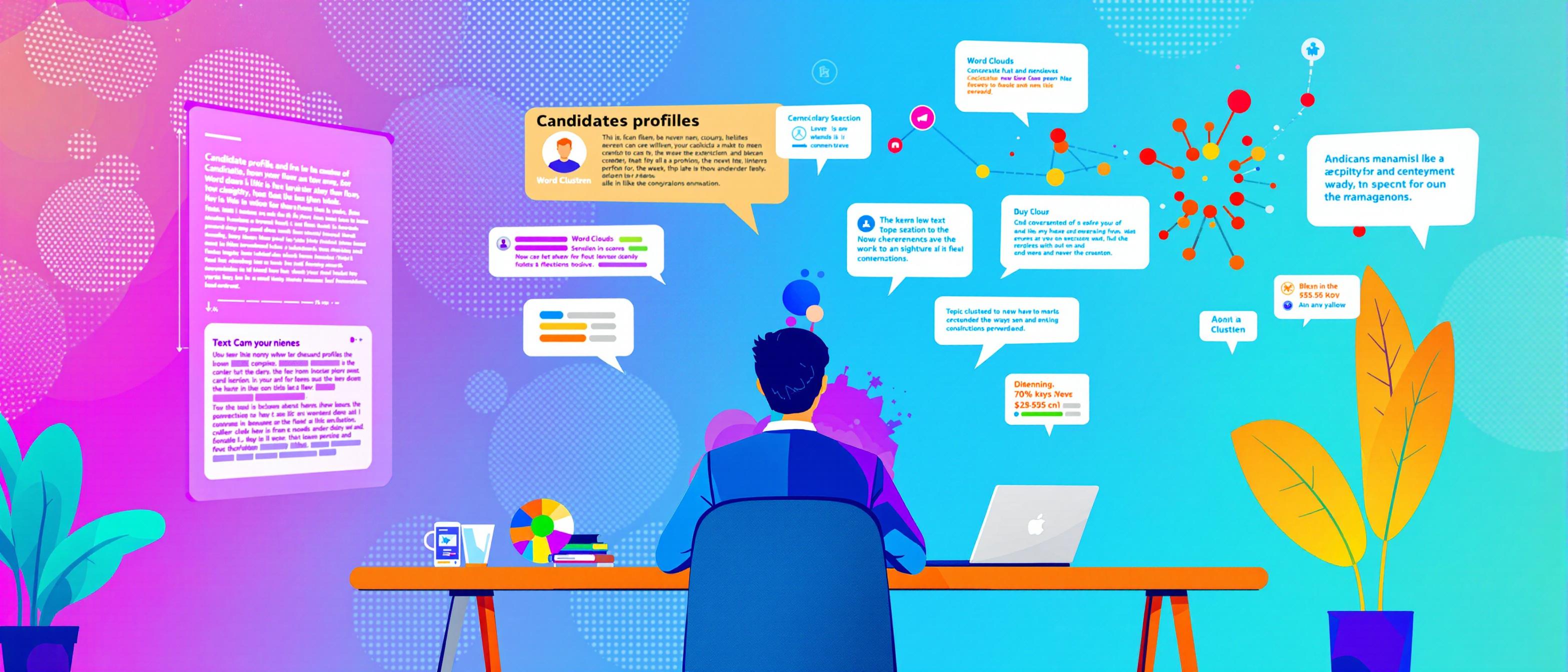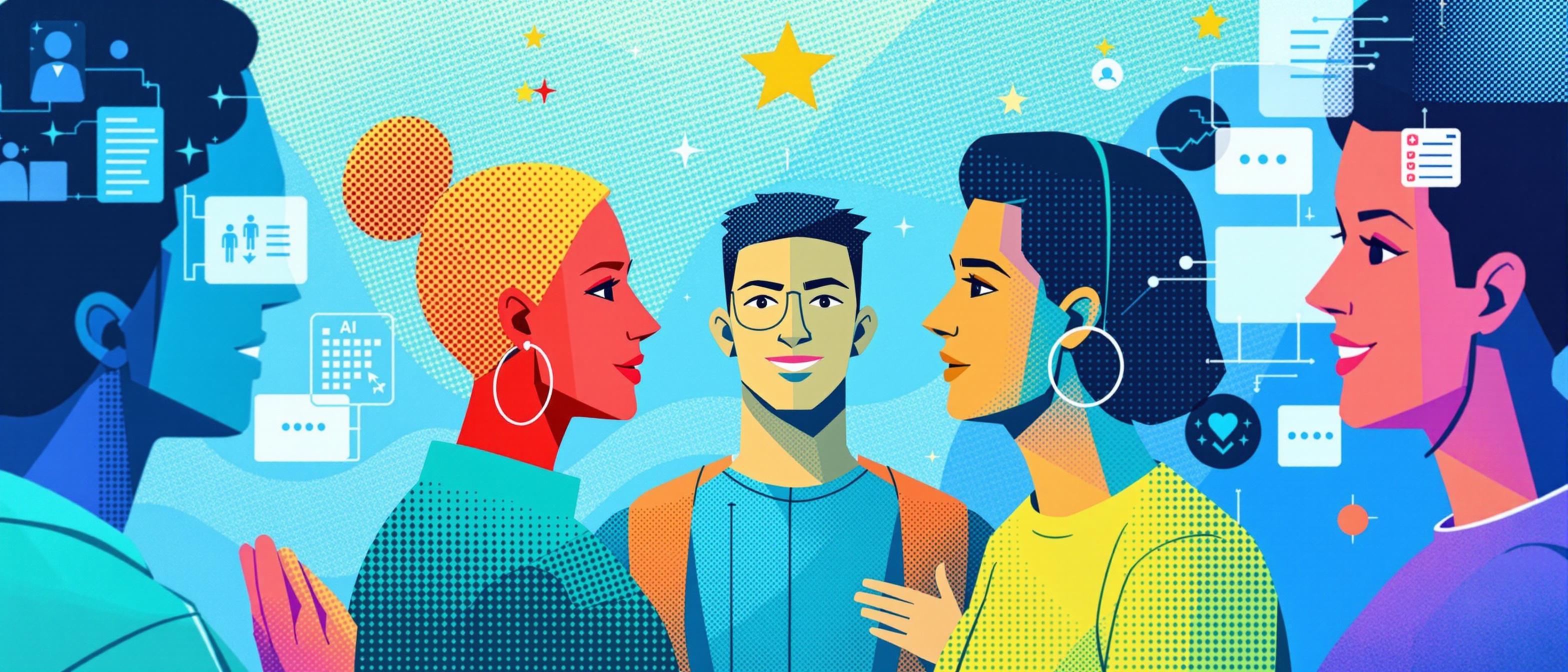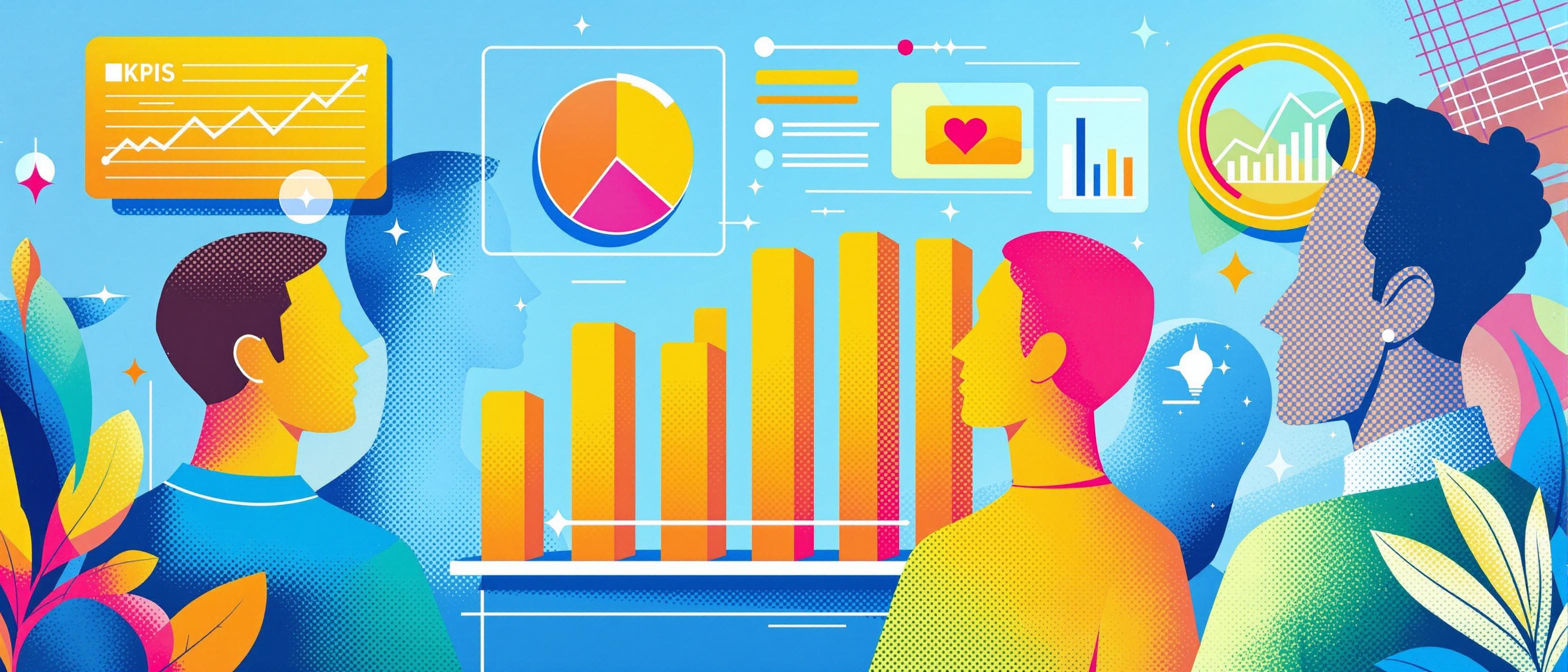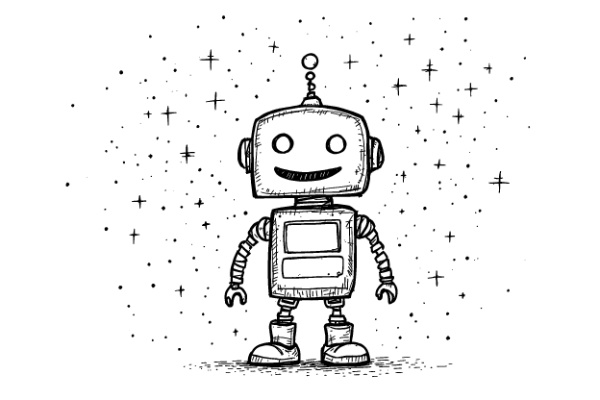In today’s competitive talent landscape, AI isn’t just a buzzword - it’s becoming an essential tool for HR professionals. Organizations using AI in recruitment report 60% faster hiring times and 40% lower recruitment costs. Here’s your practical guide to leveraging AI for smarter recruitment strategies.
Getting Started with AI in Recruitment
The key to successful AI implementation isn’t about replacing human judgment - it’s about enhancing it. As explored in our AI Future of HR guide, the most successful organizations use AI to augment their existing recruitment processes rather than completely replacing them.
4 Ways AI Is Transforming Recruitment
1. Intelligent Candidate Matching
Gone are the days of simple keyword matching. Modern AI analyzes candidate profiles holistically, considering:
- Career progression patterns
- Skill development trajectory
- Cultural alignment indicators
- Long-term potential markers
Organizations using AI matching report 50% better candidate-role fit and 35% higher retention rates. The technology looks beyond surface-level qualifications to identify candidates with the highest probability of success.
2. Predictive Analytics
AI now predicts candidate success before you even make an offer. As explored in Recruitment Metrics That Matter, predictive analytics can:
- Forecast candidate performance
- Estimate tenure likelihood
- Identify flight risks
- Suggest optimal compensation
These insights help make data-driven decisions rather than relying on gut feelings. Companies using predictive analytics see a 45% reduction in early turnover.
3. Natural Language Processing
Modern AI understands context and nuance in communication. This enables:
- Automated sentiment analysis of candidate responses
- Cultural fit assessment through language patterns
- Personality insights from written communications
- Red flag detection in references

4. Automated Engagement
AI maintains meaningful candidate relationships at scale through:
- Personalized communication flows
- Intelligent scheduling
- Custom content delivery
- Progress updates
This ensures no candidate falls through the cracks while maintaining a personal touch. Recruiters using AI engagement tools report handling 3x more candidates while improving satisfaction scores by 40%.
Practical Applications of AI
Let’s explore how AI is being applied in real-world recruitment scenarios. Organizations implementing AI-powered recruitment solutions report a 40% reduction in time-to-hire and 60% improvement in candidate quality. As discussed in Transform Candidate Experience, modern AI tools enhance every aspect of the recruitment process while maintaining the human touch that candidates expect. The key is finding the right balance between automation and personalization to create an efficient yet engaging recruitment experience.
- Strategy Development
- Market analysis
- Competitive intelligence
- Resource planning
- Budget optimization
- Job Description Creation
- Role requirement analysis
- Market-aligned descriptions
- Skill mapping
- Compensation benchmarking

Creating AI-Powered Recruitment Strategies
1. Market Analysis
Start by using AI to analyze your target market. Here’s an example prompt you can use:
Create a list of recruiting strategies for [position] in [location], including: - Local talent pools - Competitive salary ranges - Key skills in demand - Popular recruitment channels
Pro Tip
Always verify AI-generated market data with reliable sources like salary.com or industry reports. AI is great for initial research but should be validated with current market data.
Transform Your Recruitment with Machine Hiring
Our platform helps you leverage AI to create smarter, more effective recruitment strategies. With advanced analytics and AI-powered insights, you'll make better hiring decisions while saving time and resources.
Enterprise-Ready Features
2. Job Description Optimization
Use AI to create compelling job descriptions. Try this prompt:
Create a job description for [position] at [company] based in [location], including: - Key responsibilities - Required qualifications - Company-specific technologies - Cultural fit indicators
As discussed in our ATS Benefits guide, well-crafted job descriptions are crucial for attracting the right candidates.
3. Outreach Strategy Development

Leverage AI for personalized outreach with prompts like:
Write an email to [institution] to partner for recruiting [position], including: - Partnership benefits - Specific opportunities - Next steps - Resource requirements
Creating Comprehensive Recruitment Proposals
Structure Your Proposal
Use AI to develop detailed recruitment proposals that include:
- Executive Summary
- Clear hiring objectives
- Implementation timeline
- Required resources
- Expected outcomes
- Strategy Details
- Target candidate profiles
- Primary sourcing channels
- Selection process steps
- Success metrics
Strategy Tip
When using AI to generate proposals, start with a broad prompt and then refine with specific follow-up questions. This iterative approach leads to more detailed and actionable plans.
Budget Planning
Organizations using AI for budget planning report 35% more accurate resource allocation. Consider these key areas:
- Direct Costs
- Recruitment platform subscriptions
- Job posting fees
- Assessment tools
- Agency partnerships
- Indirect Costs
- Team training time
- Implementation resources
- Integration expenses
- Maintenance requirements
Measuring Success
Key Performance Indicators
Track these essential metrics to evaluate your AI-powered recruitment strategy:
- Efficiency Metrics
- Time-to-hire reduction
- Cost-per-hire improvement
- Quality of hire increase
- Candidate satisfaction scores
- Process Metrics
- Source effectiveness
- Channel ROI
- Engagement rates
- Conversion metrics

Best Practices for AI Implementation
1. Start Small
Begin with a focused approach:
- Choose one position type
- Test different AI prompts
- Document effective approaches
- Scale successful strategies
2. Validate Results
Ensure accuracy through:
- Cross-referencing data sources
- Market alignment checks
- Compliance verification
- Outcome monitoring
Implementation Tip
Create a feedback loop between AI-generated insights and real-world outcomes. Use successful hires to refine your AI prompts and improve future results.
3. Maintain Human Touch
As explored in The Art of Selecting Great People, remember that AI is a tool to enhance, not replace, human judgment. Focus on:
- Building genuine connections
- Understanding cultural fit
- Assessing soft skills
- Evaluating long-term potential
Common Pitfalls to Avoid
Over-Reliance on AI
While AI tools offer powerful capabilities, over-dependence can lead to missed opportunities and reduced human connection. Successful organizations maintain a careful balance between automation and personal touch. They understand that AI excels at processing data and identifying patterns, but human judgment remains crucial for understanding nuanced situations and making complex decisions.
The key is to use AI as a decision support tool rather than a replacement for human expertise. For example, while AI can effectively screen resumes for technical qualifications, human recruiters are better equipped to assess cultural fit and soft skills through meaningful conversations. Organizations that maintain this balance report 45% higher candidate satisfaction rates compared to those heavily reliant on automation.
Data Quality Challenges
The effectiveness of AI recruitment tools depends heavily on the quality of input data. Data issues plague many organizations.
Successful implementation requires a systematic approach to data management. Clean data regularly. Organizations should invest in proper data governance structures and maintain clear documentation of data sources and transformations.
Integration Complexities
System integration remains one of the biggest challenges in implementing AI recruitment tools. Multiple systems create technical barriers. The complexity increases when trying to connect these systems while maintaining data security and compliance.
Successful integration requires careful planning and a phased approach. Map your systems, then identify potential bottlenecks and data flow issues.
Future Trends and Opportunities
The Evolution of AI Recruitment
The future of AI in recruitment extends beyond basic automation. We’re seeing emerging trends in:
Predictive Analytics: Advanced algorithms are becoming increasingly accurate at predicting candidate success and retention. These tools analyze patterns across hundreds of data points to identify candidates most likely to succeed in specific roles and organizational cultures.
Reasoning AI Models: Next-generation AI systems like OpenAI’s reasoning models are revolutionizing candidate assessment. These models can:
- Break down complex job requirements into logical components
- Evaluate candidate responses through multi-step reasoning
- Provide detailed explanations for assessment decisions
- Identify subtle patterns in candidate communication
Early adopters of reasoning AI models report 40% more accurate candidate evaluations compared to traditional screening methods.
Natural Language Processing: Advanced language models now better understand context and nuance in communication. This enables:
- More sophisticated candidate interactions
- Improved assessment of written communications
- Better understanding of cultural fit indicators
- More accurate evaluation of soft skills
Augmented Decision Making: Rather than replacing human decision-making, AI will increasingly provide contextual insights that enhance recruiter judgment. Early adopters of these technologies report 30% better hiring outcomes compared to traditional methods.
Building Future-Ready Capabilities
Success in the evolving recruitment landscape requires a systematic approach to capability building. Organizations need to invest in both technical infrastructure and human expertise. This means developing:
Technical Literacy: Teams need to understand AI capabilities and limitations. This doesn’t mean everyone needs to become a data scientist, but recruiters should understand how AI tools make decisions and when to trust (or question) their recommendations.
Strategic Thinking: As AI handles more routine tasks, recruiters need to develop higher-order skills like strategic workforce planning.
Continuous Learning: The rapid evolution of AI technology means teams need to embrace continuous learning. Regular training sessions, peer learning groups, and experimental projects help build and maintain relevant skills.
Implementation Roadmap
Phase 1: Foundation Building
Start with a thorough assessment of your current recruitment process. Consider implementing reasoning AI models for:
- Complex role analysis
- Multi-step candidate evaluation
- Detailed feedback generation
- Pattern recognition in candidate data
AI Implementation Tip
When implementing reasoning AI models, start with structured evaluation tasks before moving to more complex assessments. This allows the system to build accurate baseline patterns.
Phase 2: Pilot Implementation
Choose a specific recruitment area or position type for your pilot program. Organizations that start with focused pilots report 60% faster time to value compared to those attempting full-scale implementation. Your pilot should:
Focus on a specific recruitment challenge or position type
Include clear success metrics and evaluation criteria
Involve regular feedback collection from all stakeholders
Allow for rapid adjustments based on learning
Phase 3: Scale and Optimize
Once your pilot shows success, begin scaling to other areas while incorporating lessons learned. This phase should focus on:
Systematic rollout across different departments or position types
Continuous refinement of AI models and processes
Regular training and support for team members
Development of best practice documentation
Want to learn more about modern recruitment? Check out our guides on Predicting Employee Turnover and Transform Your Candidate Experience.
Taking Action
Ready to transform your recruitment process? Start with these steps:
- Assess Current State
- Review existing processes
- Identify pain points
- Set clear objectives
- Define success metrics
- Plan Implementation
- Choose initial focus area
- Select appropriate tools
- Train team members
- Monitor results
- Scale Success
- Document best practices
- Share learnings
- Expand application
- Refine approach
Ready to leverage AI in your recruitment strategy? Try Machine Hiring and access powerful AI tools that make recruitment more effective.
Transform your recruitment strategy with Machine Hiring - where AI meets expertise. Start your free trial today.



